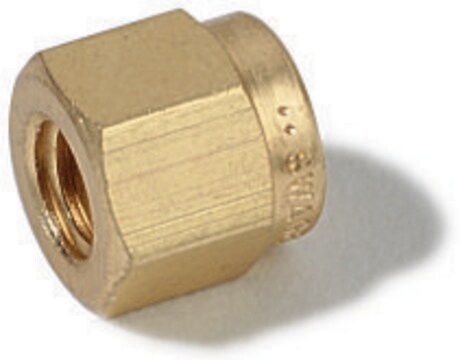22038
Swagelok® Front Ferrule
Swagelok® 203-1, stainless steel, 1/8 in. Swagelok
Synonym(s):
Swagelok® 203-1,SS FRT FERR 1/8" PK5
Sign Into View Organizational & Contract Pricing
All Photos(1)
About This Item
UNSPSC Code:
41115717
Recommended Products
material
stainless steel
packaging
pkg of 5 ea
manufacturer/tradename
Swagelok® 203-1
fitting
1/8 in. Swagelok
Looking for similar products? Visit Product Comparison Guide
General description
Swage type fittings are one of the most popular connectors which are available in metal and plastic forms; they are very useful for connecting similar or dissimilar materials, like metal to glass or metal to plastic. The general swage tubing coupler has four parts namely the body, into which the tube is placed, two ferrules that is front ferrule and back ferrule and lastly a packing nut. Brass ferrules are used with copper tubing whereas stainless-steel ferrules are used with stainless-steel tubing. Furthermore, the stainless steel ferrules have great mechanical strength, but they cannot be removed once they are on the column.
Legal Information
Swagelok is a registered trademark of Swagelok Company
Choose from one of the most recent versions:
Certificates of Analysis (COA)
Lot/Batch Number
Sorry, we don't have COAs for this product available online at this time.
If you need assistance, please contact Customer Support.
Already Own This Product?
Find documentation for the products that you have recently purchased in the Document Library.
Gas Chromatographic Reactors.
Patton JE.
Gas Chromatography, 1, 133-133 (1971)
Grob RL & Barry EF.
Modern Practice of Gas Chromatography, 522-523 (2004)
Christine S Kim et al.
Cell metabolism, 32(4), 629-642 (2020-09-10)
Stem cells reside in specialized niches that are critical for their function. Upon activation, hair follicle stem cells (HFSCs) exit their niche to generate the outer root sheath (ORS), but a subset of ORS progeny returns to the niche to
The Manipulation of Air-Sensitive Compounds.
Shriver DF.
Nature, 217-218 (1986)
Our team of scientists has experience in all areas of research including Life Science, Material Science, Chemical Synthesis, Chromatography, Analytical and many others.
Contact Technical Service